2025 Edition Professional 3D Printer Buyers Guide
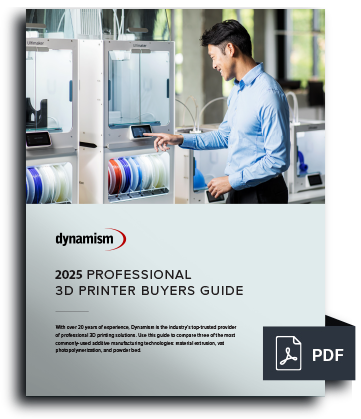
Choosing the right 3D printer doesn't have to be difficult. Find the perfect printer for your application. This in-depth guide covers pricing, materials, dimensional accuracy, and more.
Download now Dynamism Digital Manufacturing Fast and Professional on-demand 3D Printing Start Printing Now
Dynamism Digital Manufacturing Fast and Professional on-demand 3D Printing Start Printing Now
Show Us How You Use Your Bambu Printer – Win an H2D 3D Printer + Get Featured!
Learn More
Please Note: This item is unable to be shipped outside the U.S.

Shop with Confidence
Dynamism will match a competing offer on qualified items. Learn More
Contact us for detailed purchasing support and custom pricing. A Dynamism 3D Printer specialist will contact you within one business day.
Founded in 1997, we bring next-generation technology to customers, with an emphasis on expertise and white-glove service. Showrooms in Chicago, Detroit, Tokyo, and Seoul.
The leading national supplier of Desktop 3D printers. Expertise in both Industrial and Desktop 3D printing. Supplier of next-generation Metal, SLS, ultrafast Industrial printers.
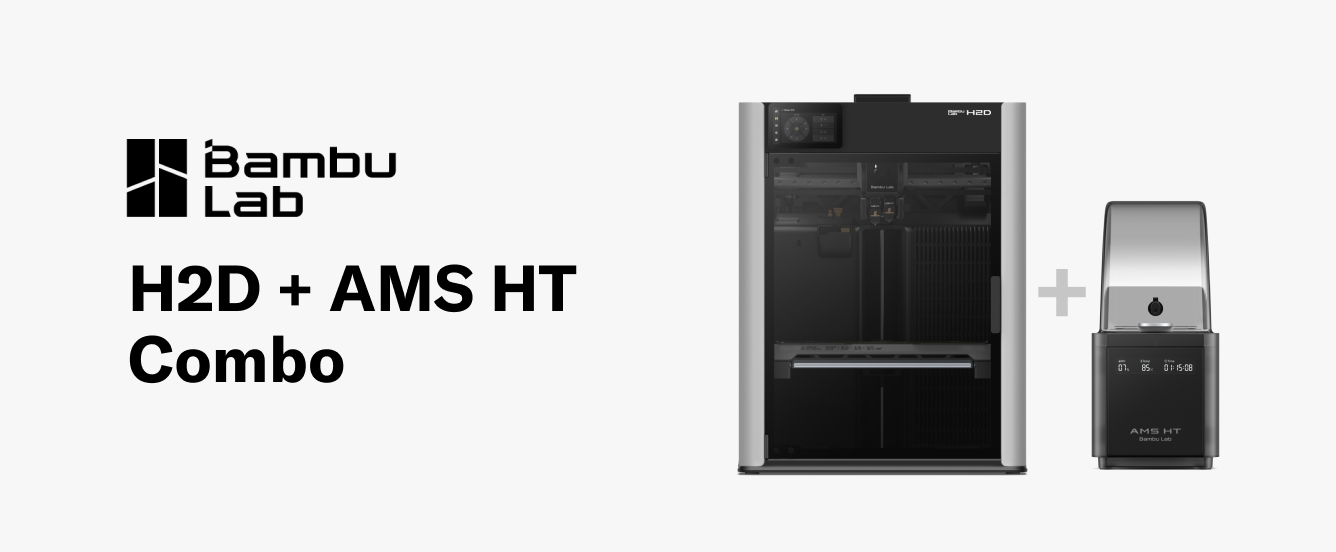

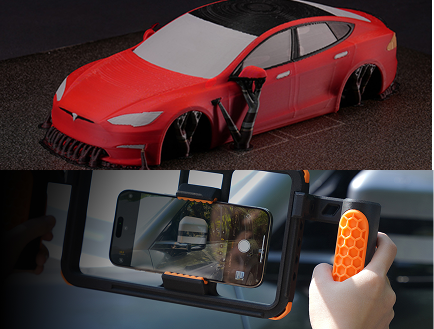

Expanded design freedom, reduced material waste, and stunning visual results.
Print flexible and rigid materials in the same project! Create dedicated support structures for perfect overhangs with minimal waste. Experience fast and efficient multi-color printing like never before.
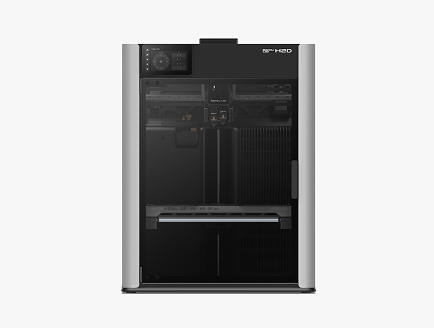

Save space and money by combining multiple tools into a single, integrated system.
The H2D isn't just a 3D printer. With optional modules, it transforms into a laser engraver/cutter, a digital cutter for materials like vinyl and fabric, and even a pen plotter for creating drawings and artwork. One machine, endless possibilities!
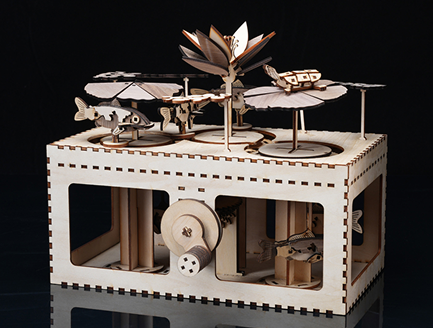

Expand your creative horizons and offer personalized products. Available in 10W and 40W modules.
Add intricate details to your projects with the powerful laser engraving and cutting capabilities. Engrave on wood, leather, acrylic, and more.


Easily create custom designs for various applications.
Precisely cut a wide variety of materials, including vinyl, paper, fabric, and thin plastics. Create custom stickers, decals, stencils, and more.
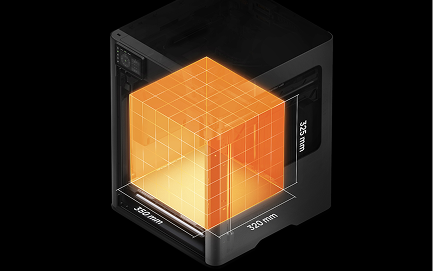

Print bigger models, engrave larger objects, and bring your most ambitious designs to life.
With a generous build volume of up to 350mm x 320mm x 325mm, the H2D lets you create large-scale projects with ease.
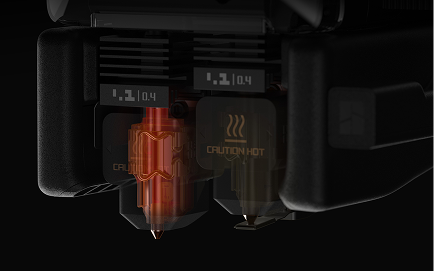

Create strong, durable, and functional parts for demanding applications.
The H2D boasts a 350°C hotend and a 65°C actively heated chamber, allowing you to print with high-performance materials like ABS, ASA, PC, and nylon without warping or deformation.
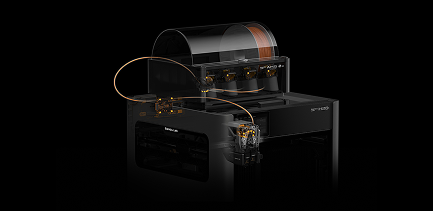

Reliable and consistent printing, even with challenging materials.
The H2D features an industry-leading filament monitoring system with 15 sensors that track filament flow, tension, and more. Get real-time alerts and prevent print failures due to filament issues.
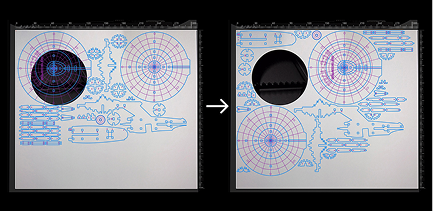

Minimize waste and maximize your resources.
Leveraging real-time images from the BirdsEye camera, Bambu Suite can automatically arrange your project according to the shape of your material, i.e left over plywood from the previous project. This feature helps you to get the most out of every material.
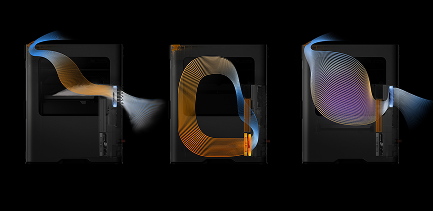

Enhanced safety and optimized performance.
A comprehensive material flow monitoring, the H2D features comprehensive material flow monitoring. Throughout the AMS-to-nozzle path, 15 strategic sensors form an intelligent network, continuously tracking five key parameters: feeding velocity, tension, filament tip location, extruder thermal environment, and dynamic extrusion pressure. This establishes an industry-leading filament behavior control system.
* To ensure the heat bed quickly reaches the needed temperature, the printer will maintain maximum power for no more than 3 minutes .
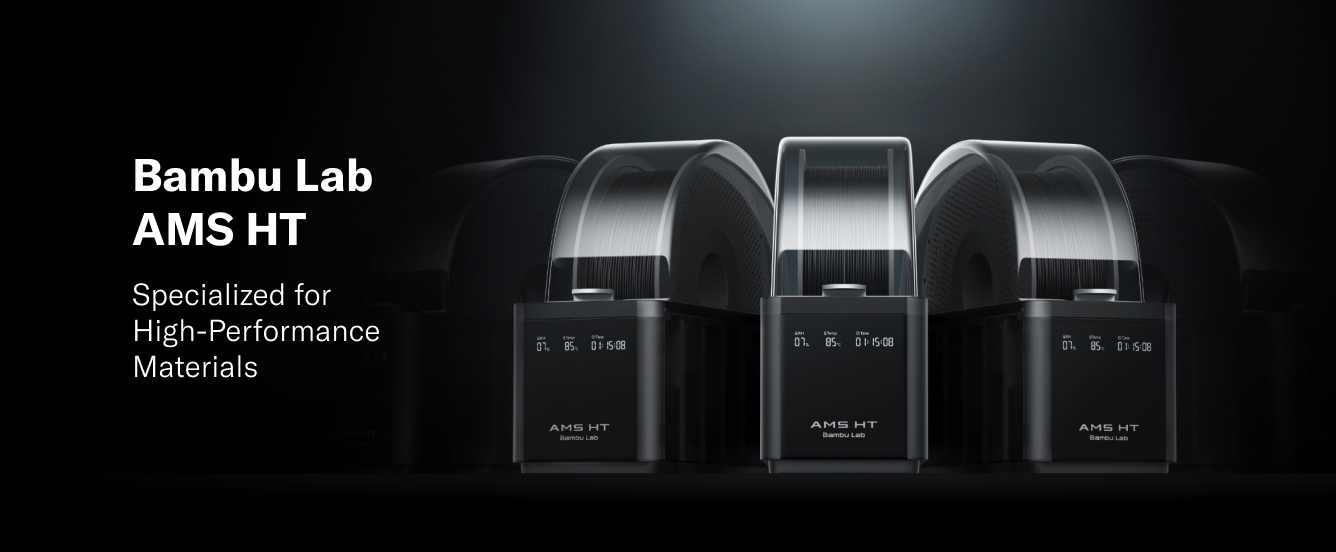

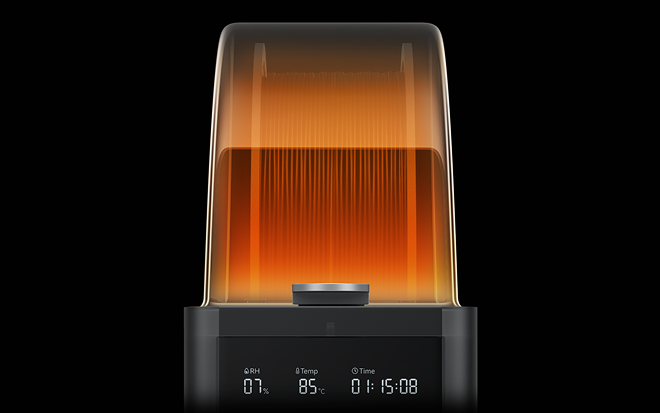

Drying temperature up to 85°C, optimized for high-temperature materials
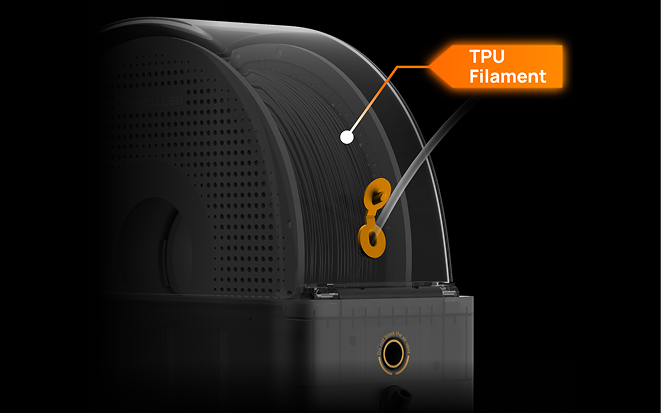

Independent filament outlet designed for soft or brittle materials
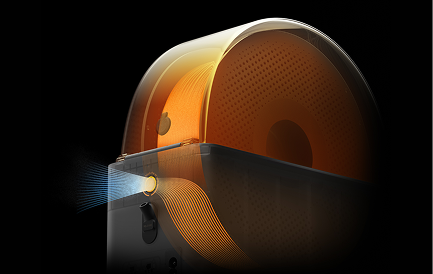

Automated venting facilitates dehumidification during drying and airtight sealing for weeks of quality printing
During the drying process, the filament spools rotate automatically to ensure more even drying.
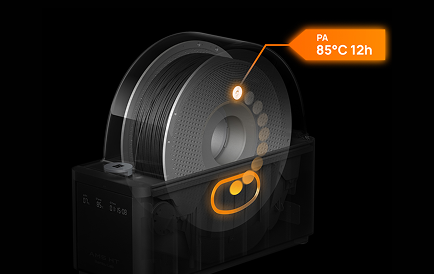

AMS HT uses RFID to auto-match drying settings for Bambu official filaments, no manual input needed
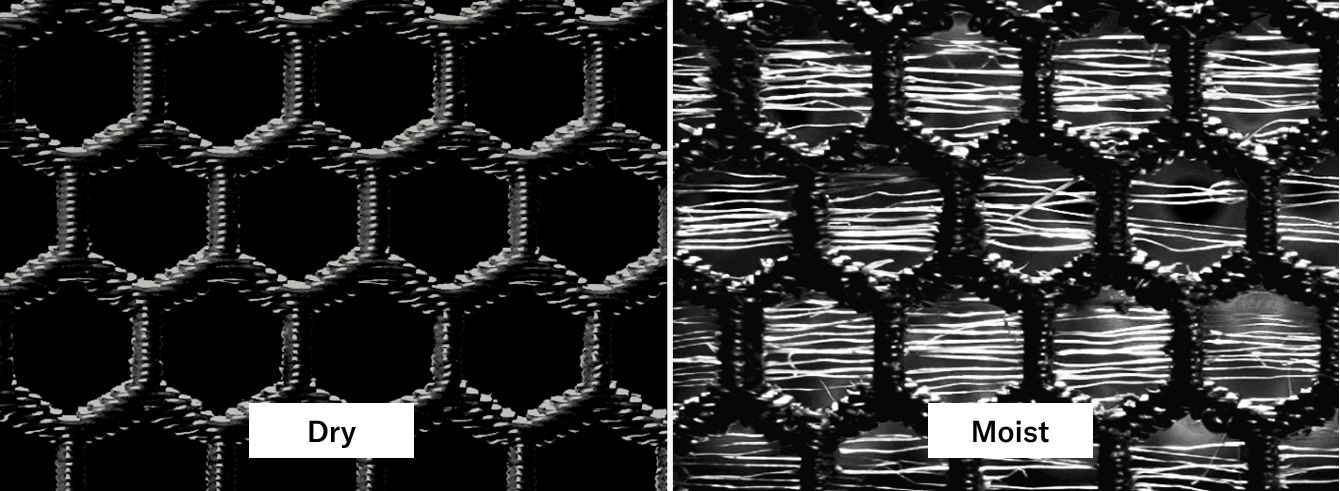

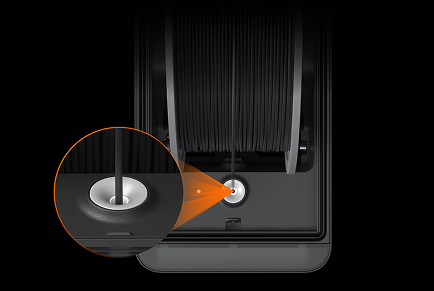

Ceramic filament inlets with Vickers hardness of 1200 significantly enhances durability.
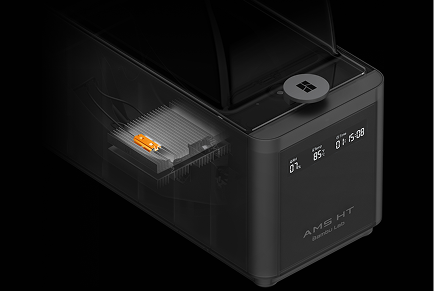

Accurate temperature sensor and physical failsafe for safe, precise heating
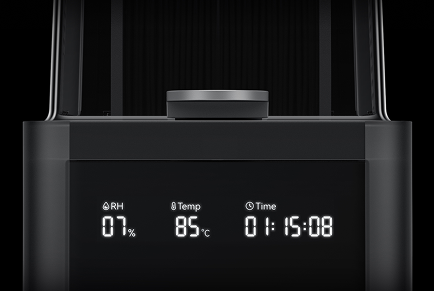

Clear digital display for easy monitoring of drying status
The AMS HT will be compatible with all Bambu Lab products.
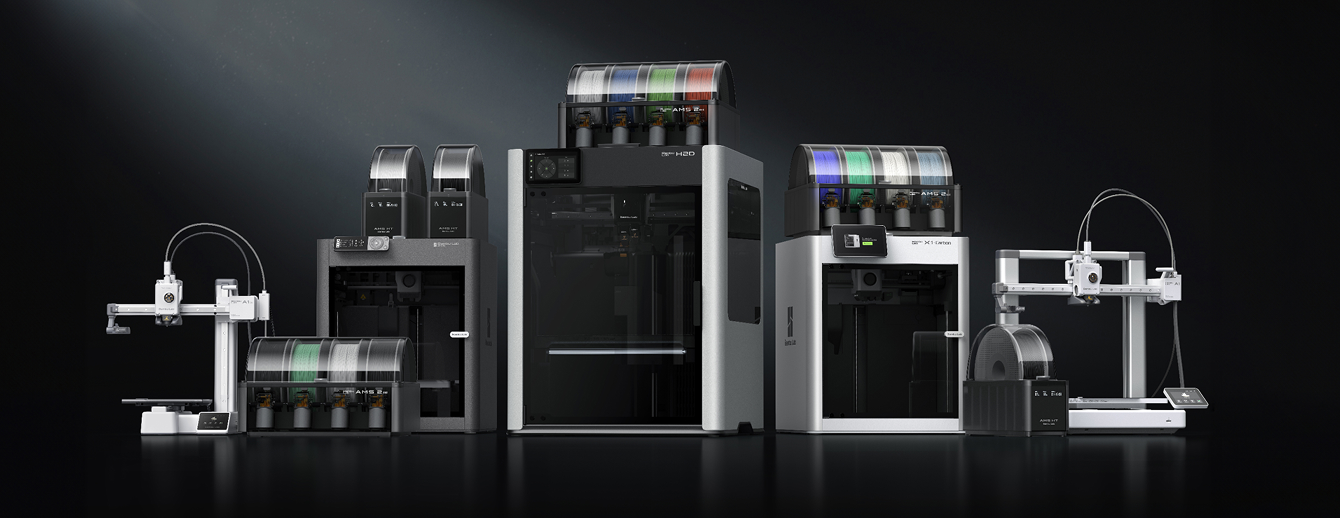

The H2D laser full combo has a built-in air pump and air pipe on the back of the printer, and is pre-installed with a BirdsEye camera. The front door, left and right side Laser Protective Windows, and top cover are all designed with laser protection. The packaging list includes a laser module, a cutting module, a smoke exhaust pipe and its adapter, as well as an emergency stop button.
We plan to launch a laser upgrade kit for the non-laser version of H2D. The upgrade kit is expected to be released in June and will also provide installation instructional videos to help users complete the upgrade smoothly.
It is important to note that the air pump in the upgrade kit is an external air pump, which has a different installation structure from the built-in air pump in the full set. When using it, it can only be installed externally and connected to the machine through an air tube.
Yes, the left and right hotends have identical structures and materials, and can be used interchangeably.
Because H2D is a dual-hotend printer, and in the most extreme scenario, all AMS can be connected to one hotend while the other hotend uses an external spool holder, it can support up to 25 colors.
The first-generation AMS has been confirmed to have full plug-and-play compatibility and can be used with the H2D for multi-color printing, but it does not support the AMS drying function.
Due to the fundamental differences in the feeding mechanism and buffering structure, the H2D does not support the AMS lite.
The two 4-pin ports on the back are reserved for future expansion accessories. For example, to upgrade a non-laser version of the printer to a laser version, one of these ports can be used to connect an external air pump.
Although the hotend of the H2D series is similar to the A1 hotend in structure , it is not exactly the same.
The H2D hotends are specifically designed for the H2D printer, offering optimized compatibility. For example, they support a larger maximum volumetric flow rate, lower clogging risk, more precise nozzle offset calibration between the left and right hotends, and automatic hotend type recognition via the live camera. Therefore, to ensure optimal print quality, it is strongly recommended not to use A1 hotends on the H2D printer.
Therefore, to ensure you get the best print quality, we strongly recommend that you do not use the A1 hotend for H2D printers.
Purchasing additional H2D hotends for use on A1 printers is feasible. However, you will also need to use the H2D hotend silicone sock.
Both the 10W and 40W laser modules are blue light lasers that support processing a variety of materials, including wood, rubber, metal sheets, leather, dark acrylic, and stone. However, due to differences in power and size, there are the following distinctions:
1. Maximum cutting thickness(For Basswood Plywood):
10W laser module: 5mm;
40W laser module: 15mm;
2. Maximum engraving speed(For Basswood Plywood):
10W laser module: 400mm/s;
40W laser module: 1000mm/s;
3. Processable Area:
10W laser module: Maximum processing area X310mm * Y270mm, maximum processing height 280mm;
40W laser module: Maximum processing area X310mm * Y250mm, maximum processing height 265mm;
The package does not include a standard USB flash drive. You can still initiate printing normally without a USB, as the printer has built-in storage space to run print files.
However, without a USB inserted, the following functions will be affected:
1. The recording and time-lapse photography functions can't be turned on;
2. Printing cannot be initiated through the LAN;
3. Print files cannot be sent to the machine for storage through the studio;
4. Log files cannot be exported;
USB requirements: USB2.0 protocol or above (actual minimum write speed needs to be greater than 10M/s), supported file formats are FAT32 and exFAT. And the printer only supports mounting one USB, and cannot connect multiple USB via a USB hub.
The hotend to be used for printing has already been determined when the model file is sliced. As for the built-in models, the right hotend has been selected during the slicing process, so it is impossible to change the hotend used for printing on the printer screen.
When you slice the file in Bambu Studio and send the print task , you can freely choose to use the left hotend or the right hotend. For some filaments, such as TPU and PPS/PPA-CF, it is recommended to use specific hotends for printing.
For more details on H2D filament printing, please check the Wiki.
H2D is equipped with an efficient exhaust system that effectively removes smoke and dust generated by laser operations, significantly reducing contamination. During R&D, we conducted rigorous testing to ensure that with regular machine cleaning, the impact of smoke and dust on performance and precision is negligible. For detailed cleaning instructions, please refer to: Wiki.
Due to the flexible nature of TPU filaments, there are some operational issues that can arise during feeding and printing. To facilitate TPU printing, we have created a dedicated Wiki guide. Simply follow the instructions in the Wiki to successfully print with TPU filaments: Wiki.
Because laser processing involves using high-energy lasers on potentially flammable materials, we strongly advise users not to leave the machine unattended during laser operations. Please maintain constant vigilance over the machine's operational status and ensure that there are no flammable or explosive materials in the machine's surroundings. For more information please refer to: Wiki.
For more information about H2D, refer to the official Wiki.
The port at the rear of the top cover is specifically for TPU filament. Due to the softness of the TPU filament, it is easy to fail when using the AMS 2 Pro automatic feeding function. When using the TPU, insert it into the AMS HT and ensure the material tray rotates in the correct direction. Insert the material tube into the TPU output port and manually push the filament through the PTFE tube until it is fully loaded into the extruder.
Note:
. When using TPU, AMS HT cannot use the automatic feed and return function, but can be used as a drying box to prevent material moisture.
. AMS HT won't be able to run filament drying while feeding filament and initiating a print via the bypass port.
AMS HT compatibility with X1 and P1 printers will be added through an OTA update by the end of April.
If only connecting one AMS HT to a X or P series printer, a filament buffer is required to be purchased separately. If connecting multiple AMS HT units,we recommend that you purchase an AMS Hub.
AMS HT compatibility with A1 and A1 mini printers will be added through an OTA update in Q3 2025.
Printing while drying is not yet supported, including all the AMSs that are related to the on-going print job (eg. The AMSs assigned for auto-refill). However, you can dry filament in AMSs that are not assigned to the on-going print job.
X1 and P1 series printers support up to 4 AMS HT connections at the same time.
H2D and X/P/A series printers are connected to AMS HT and use drying function. Each AMS HT requires an external 220V power supply for drying It is not supported to draw power from the printer for drying (The power adapter is pre-included with the product package).
When using the AMS HT drying function, the AMS HT must be connected to the printer via a 6-pin bus cable to ensure that the printer is powered on and set to filament drying mode.
The AMS HT cannot perform standalone drying without a connection to the printer.


